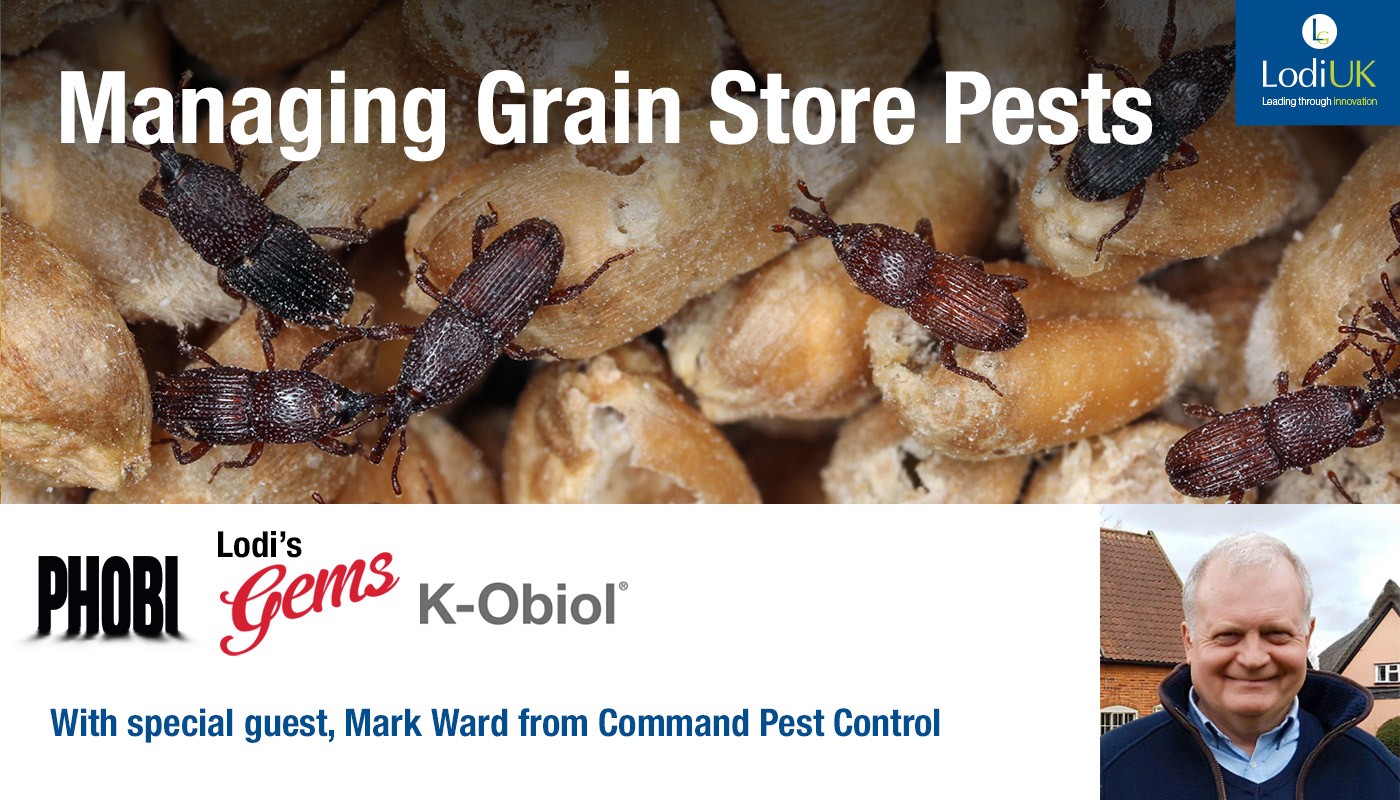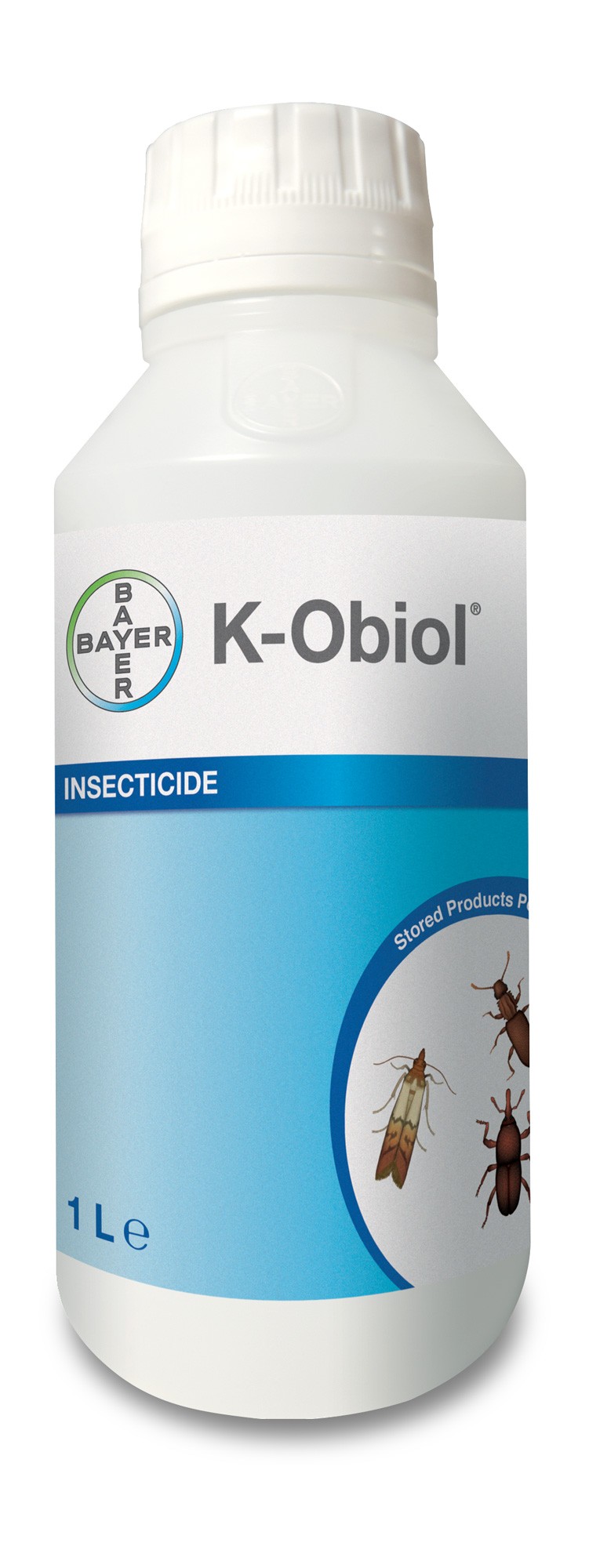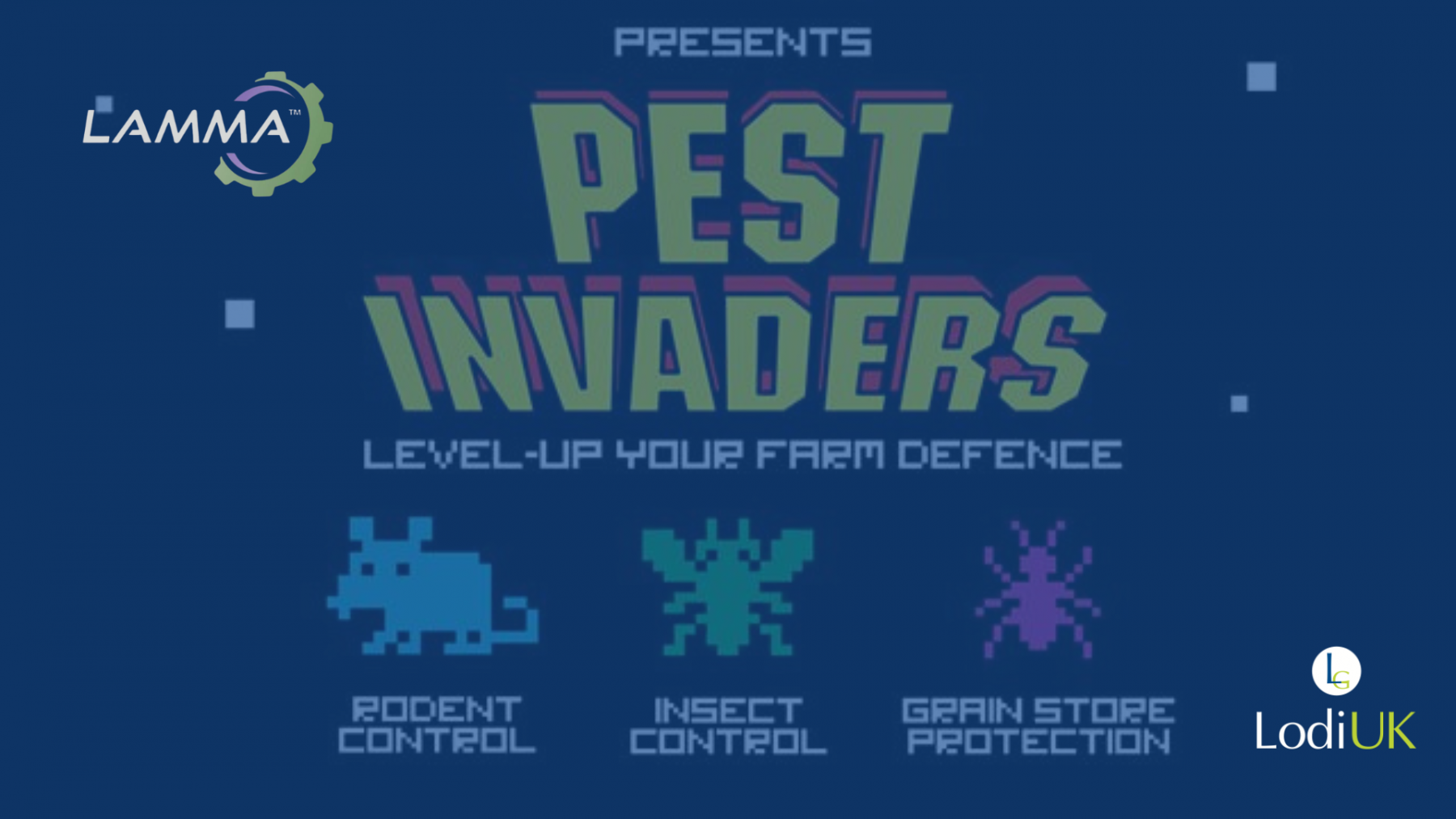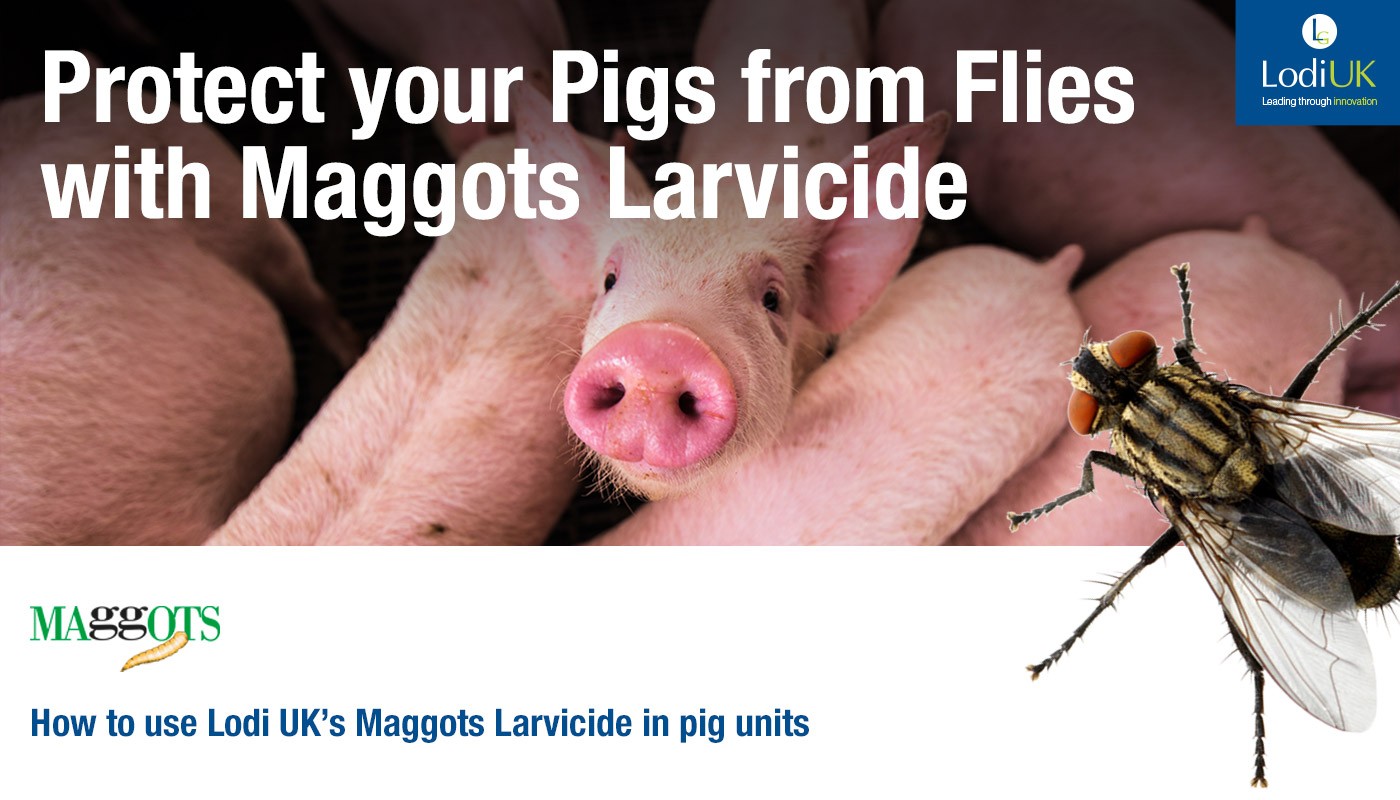
Key Pests to Control In and Around Grain Stores
The key pests that are likely to invade your stores are:
- Rats and Mice
- Birds, like feral pigeons, wood pigeons and collared doves. These days we are also seeing a lot of racing pigeons as well.
- Stored product insects
- Grain Mites
Buildings & Maintenance to Proof Against Pests
Building proofing is essential to keep rodents and birds out as they can exploit holes in the fabric of the building. In years past, it was possible to control these intruders just with toxic substances, but now that is no longer possible, it is crucial to proof your stores. To proof areas, use wire mesh and fill any holes on the ground, protect cabling with an anti-rodent spray or expanding foam and physical barriers such as metal baffles and casings, and sure up drainage pipes. Attaching brush strips to the bottom of doors can help to keep rodents from coming under them.
Outside the store, cut back any trees or brambles that are too close to the store and strim any undergrowth to stop them from being able to hide there. If you have overfilled your store and there is some spillage, make sure to clean that up quickly. Some people dig a barrier and will put a plastic membrane drainage stone in it. This is very unattractive for rodents to start digging through.
Cleaning and Hygiene in the Store
It’s a good idea to get a plan together. There is only a short window of opportunity to reflect on any issues you’ve had and to rectify them. Time moves quickly and before you know it, you’ll be filling the store again and will miss the chance to get things right!
Cleaning is absolutely critical. A lot of people like to carry out their own cleaning rather than getting a professional company in. Cleaning really does mean ‘top to bottom’. The roof, steelwork, perlings, electrical cupboards, inside the ducting, the wind tunnel all need to be made spotless. Brushing alone will not shift all the dust and potential insects that are sitting inside cracks and crevices. You really need an airline and a compressor. Our operatives would blow the grain store down from the apex of the roof to the eves, the grain wall and any cavities. Don’t forget behind the grain walls.
Once you’ve vacuumed out the dust, you must take the sweepings and put them well away from store. If you don’t, you’ll soon have the insects walking straight back in.
Empty Grain Store Treatments with Insecticides
 Once the grain store has been fully and thoroughly cleaned, you need to make sure you take every opportunity to stop insects breeding in the store. Grain store pests can live a very long time without food. When you clear the store out, they will climb up into the roof space and wait for next harvest to come around. Insecticidal treatments give a good protection and should be carried out a few weeks before the grain comes into store. Using an insecticidal spray, like K-Obiol, with a long residual will give you maximum protection as it lengths the time that the insects have to come into contact with the active ingredient. Professional spraying equipment can shoot a jet of insecticide a few metres vertically so it gets into the roof spaces effectively. The product can also be fogged or misted.
Once the grain store has been fully and thoroughly cleaned, you need to make sure you take every opportunity to stop insects breeding in the store. Grain store pests can live a very long time without food. When you clear the store out, they will climb up into the roof space and wait for next harvest to come around. Insecticidal treatments give a good protection and should be carried out a few weeks before the grain comes into store. Using an insecticidal spray, like K-Obiol, with a long residual will give you maximum protection as it lengths the time that the insects have to come into contact with the active ingredient. Professional spraying equipment can shoot a jet of insecticide a few metres vertically so it gets into the roof spaces effectively. The product can also be fogged or misted.
It is now possible to use organic certified insecticides. Due to the growing number of organic stores, we have introduced this service and even keep the equipment separate to avoid cross-contamination.
After the treatment is completed, a professional pest control company will give you a certificate which can be put in your records for any assessments e.g. Red Tractor.
How to Monitor your Grain Store and Maintain a Pest-free Environment for Long-Term Storage
Monitoring should start as soon as the grain comes into store. Personally, I think sieving is one of the best ways of looking at insects in grain. Grain is often pushed up into metres high piles and insects will try to reach the highest point. With sieve in hand, you should walk over the top of the grain and take large samples of grain. This will quickly tell you if you have any insects present. It’s important that you warm the insects that you catch in cold weather so that you can bring them out of their dormant state and check that they are alive. As you walk over the grain, if you pass areas that are firm underfoot, you should take a special interest in these as this is where the insects are most likely to be. With a good set of sieves, you will know if there are insects in the grain – before you send it off! This will reduce the cost involved with rejection and will lower your expectations.
I find that pitfall traps are a great piece of kit. The best way to use them is to put them just under the surface of the grain. If the lip is above the surface of the grain, the insects have a difficult job to get up and over – and into the trap! Place a good marker over the top of them so that they aren’t scooped up in a load and get stuck in someone’s auger. It is recommended that you use 1 pitfall trap per 100 tonnes of grain in the store. Do make sure that they are well spaced throughout the store.
If you do have a history of infestations, I would recommend using probe traps as well. You can push probe traps into the grain further (around 2 feet) which means that you aren’t reliant on the surface movement of insects for your data. This will give you a truer picture of your insect problem.
Grain Store Cooling is One Way of Avoiding Infestations
Weekly monitoring of the temperate should have alerted you if the temperature in the shed has become higher than normal. If the temperature of the whole store has increased, efforts should be made the cool it down with fans. However, as Ken mentioned, if there is concentrated insect activity within the store, you will see hotspots. You will be able to feel the heat against your boots. You might also see green growth at the surface, which you must remove before cooling. Grain should be stored below 10˚c but it can heat very quickly, taking the moisture levels up with it! While managing the temperature of the grain is important to manage the insect levels, it is also crucial for the end product. The grain can heat very quickly, and once it is over 45⁰, the quality will deteriorate rapidly and will start to decompose. If there is decomposition, it may get rejected even from an animal feed mill.
If you do find a hotspot, I would suggest using screw in spears. One tip to help the spears cool the grain more effectively is to take some plastic sheeting and Sellotape it around the base of the spear and spread it over the heap. This will draw in warm air from a much larger area.
If you are lucky enough to have a Sinar GrainSpear, it’s important to do the moisture sample first as it has an instant result and then move onto the temperature which takes longer. Although you can get a rapid temperate, it is more important to be accurate than fast.
Professional Fumigation is the Last Resort
All of these steps should dramatically reduce the chances of your grain getting an infestation of grain store pests, but it’s not always 100%. If your grain does still become infected, you can fumigate it to eradicate all the insects that are inside it.
As it’s a very professional service, there aren’t too many other companies that do this. All of the staff who carry out fumigation have to carry out additional training as it’s a dangerous process. When they arrive on your farm, the fumigator will assess your store and carry out a risk assessment. We would use aluminium phosphide which will kill all kinds of insect life in the store. We can do this either as a blanket, a belt or a plate in commodities. We then insulate the grain with a plastic sheet to keep the gas inside for a period of 14 days. We set up a 5 meter exclusion zone outside of the grain which we lock and take the keys too – to prevent any ‘quick trips’ into the store!
After 14 days, the grain is inspected and any gas residues are removed. Once we’ve sieved the grain and made sure there are no living insects in there, we will provide a Post Fumigation Gas Clearance Certificate. You should photocopy this and fasten a copy to every grain passport for each grain lorry that leaves the farm. This will reduce the likelihood of the grain being rejected if insects are spotted as it will be clear that they have been killed by fumigation, rather than contaminating the rest of their grain!
Controlling Rats in your Grain Store
Times have certainly changed since I started Command 35 years ago. One of my first customers asked me how many rat droppings it is acceptable to have in a tonne of grain! Of course, nowadays, we know that no pests are acceptable in a food commodity and rejections can be made.
The number one pest that attacks grain are rodents – namely rats and mice. As well as grain rejection, the rodents may cause you to fail audits. They can cause damage to buildings which might require costly rebuilds. They are also chew through wires and cause fires. Their chewing and burrowing behaviours can damage to any stock or equipment inside the store, like combine harvesters. Disease can be passed to humans and other domesticated animals, such as cats and dogs. They can pose a health risk to livestock, especially when rat urine enters the watercourse. This can affect the animals’ fertility.
Rats move seasonally. Around the 3rd week in September, when the weather starts turn colder, the nights draw in and the grain is in store, we see a mass migration of rats and mice onto farms. Nowadays, after harvest, the stubble is quickly turned for early drilling so the rodent’s food source in the field diminishes quickly and they look towards buildings. This is when you will begin to see them around your farm. The tell-tale signs of rodents include rat runs and chew marks. The rodents’ incisor teeth continually grow so they gnaw on objects like pipes, wood and wiring cables to wear them down. It’s important to keep an eye on the grain to monitor for the presence of rats and mice. Signs of rodents in the grain store include footprints in the grain.
Using Rodenticides Safely
Hopefully, you are all aware of CRRU (Campaign for Responsible Rodenticide Use). A few years, Brussels was on the verge of banning the large scale sale of rodenticides. There must be a great respect for the guide and every effort must be made to follow the legislation so that rodenticides are still available to purchase for farmers.
You should aim to use a non-toxic monitoring system. Once activity is noted, toxic bait should be used, but when control is achieved, go back to monitoring. Although rodents tend to be a seasonal problem, monitoring should be done all year around.
Old fashioned break-back traps or live traps can also be used, however live traps should be checked daily and records need to be kept. Toxic bait can inside the grain store, provided that it is a non-spill bait and is not near to stored grain. It should be noted that it is no longer acceptable to bait for mice outside with bait. You must always follow the label.
How to Report to Comply with Assurance Schemes
The report that Command Pest Control uses records your preventative measures, the pests that you have seen and what measures you are taking to control them, including the chemicals. I would recommend using one as well. If you use baiting around the site, it’s important to have a baiting plan so that every bait box and trap is recorded. Every time that you do a ‘routine’ treatment ( e.g. putting bait down) it’s important to fill a report out with the date, who did it, the bait that was used and the ingredients. You should all have MSDS (safety data) sheets within the folder so that everyone knows exactly which chemicals are being used. Competence must be shown – a certificate of confidence or qualifications – to prove that the people carrying out the treatment have sufficient training to use the products safely and effectively.
Farm Assurance Standards to Comply With
You may be a member of TASCC (Trade Assurance Scheme for Combinable Crops), Red Tractor Combinable Crops Scheme or FEMAS (Feed Materials Assurance Scheme). Virtually every bit of stored grain is assessed to some kind of assurance standard. Everything that I’ve spoken about will, I hope, enable you to meet the standards that they have set out.





